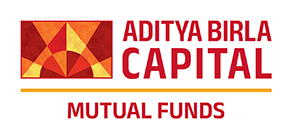How to plan for retirement

Financial independence is the most important retirement goal. With retired lives getting longer and costlier (particularly healthcare), you should start planning for retirement early in your working careers, if you want a stress free and comfortable retired life. An important factor to consider in retirement planning is lifestyle. Though lifestyle choices are income dependent, they are habit forming and difficult to give up even when you do not have income. Therefore, ability to sustain pre-retirement lifestyle in post-retirement years should be an important retirement goal.
How should you go about retirement planning when you are young?
If you are young (in your twenties or early thirties), you do not know what your lifestyle will be in your fifties and the retirement corpus you need. Nevertheless, you should start saving for retirement when you are young because there will be multiple goals (like buying a house, children’s education, marriage etc.) competing for savings. Personal finance thumb rule suggests that, you should save at least 10% of your income for retirement.
Just like you work hard to earn money, you should make your money work hard too by investing your savings. There is a saying in Wall Street that, money never sleeps. By investing your savings you will make profits, the profits re-invested will get you even more profits. This will go on and on till you remain invested; in finance parlance, this is known as compounding. If you start young, your investments can compound over longer period of time. By the time you retire, you will realize that, the investments made in your twenties and thirties grew much more than the investments made in your forties and fifties, even though you may have actually invested more in the later years of your working life; this is the magic of compounding.
Let us illustrate with the help of an example. Suppose you are 30 years old and need Rs 3 crores at the time of your retirement (at the age of 60). The chart below shows that, you can achieve this goal by investing just around Rs 4,300 every month assuming an annualized return of 15% over your investment horizon.

The chart above shows that, with a Rs 4,300 monthly investment begun at the age of 30, you will be able to accumulate Rs 12 lakhs by the age of 40, Rs 65 lakhs by the age of 50 and Rs 3 crores by the age of 60. You can see that, the investment value is growing exponentially, demonstrating the power of compounding.
Over a long investment period the power of compounding is highest in equities. When you are young, you should invest most, if not all, of your savings towards retirement in equities in a systematic way. Equity mutual funds are the best investment products for creating wealth in the long term. Investing systematically through monthly Systematic Investment Plans (SIP) will keep you disciplined in an auto-pilot mode. SIP will also help you to take advantage of volatility in asset prices automatically through rupee cost averaging.
How to go about retirement planning in the midlife?
Midlife in the West is the period supposed to begin at around 45. In my view, midlife begins a little earlier in India, because people here tend to get married and have children at relatively younger age compared to the West; midlife in India begins when you approach 40. By the time you are 40 you are well settled, adjusted to a certain lifestyle and your family’s aspirations are also fairly well defined. You should at this stage of life, start working towards a final retirement goal (nest egg).
Since the goal of retirement planning is to maintain our current lifestyle even during retirement years, the first step of retirement planning is to do cost estimation and income needs during retirement. If you think that your regular expenses will be much lower in your retirement years, you might be mistaken. While some expenses like mortgage EMI payments, children’s tuition fees etc. may go away, but you will have to spend more on healthcare (e.g. health insurance, doctor visits, medicines etc.), house repairs / maintenance etc. Based on experience in my family, I have seen that regular costs of retired people are little lower compared to when they were working, but not a whole lot lower. You have to factor in inflation and estimate inflation adjusted expenses.
During retirement, income from your investment should be able to meet these expenses (if you receive pension then you can adjust your income needs accordingly). You can then work backwards to estimate how big a nest egg (retirement corpus) you need, based on how much returns you can expect from investment. You should note that, after retirement your risk profile will be conservative and hence, you should make returns assumptions accordingly. This nest egg (retirement corpus) is your final goal and you should be working towards it, along with your other financial goals, for the rest of your working life. There are a variety of online resources available in the “Tools & Calculators” section of our website https://www.advisorkhoj.com/tools-and-calculators/ that can help you determine how much you need to save and invest. You can also take the help of a financial planner.
In your midlife, you should also have a balanced approach towards risk. You should not be taking a huge amount of risk and at the same time, you cannot avoid risks, otherwise you may not be able to meet your retirement goal. Asset allocation will ensure a balanced approach to risk. You can follow the popular 100 – Age asset allocation rule. In this rule, if you are 45 years old then you should have 55% allocation to equity and 45% allocation to debt.
Midlife is also the period of our lives when we have the maximum amount of debt, e.g. home loans, car loans etc. I do not understand why some people prefer not to prepay, saying they get tax break on interest payments. The tax break on interest payment is much smaller than the cash-outflow for interest payment. As a part of retirement planning, you should make debt repayments a priority at this stage of life. If you have an existing home loan and do not have sufficient funds to prepay, you should explore re-financing options so that you can reduce your interest burden. Interest rates in our country are very high and interest cost associated with it and high debt levels will leave you with less disposable income for other goals. If you are in your midlife and want to buy a house, you should make sure that, you will be able to repay the loan in full before you retire.
How to go about retirement planning in the last few years of your career?
In the last 5 years of your career, asset allocation is very important. By the time you retire, you should have the majority of your assets in fixed income or debt. Debt mutual funds can be great investment assets in your retirement years. You should gradually shift your asset mix from equity to debt. You can shift your asset mix systematically from equity to debt, using systematic transfer plans. However, you should not reduce your equity exposure to zero. Given that, retired lives can be 25 to 30 years long and inflation risks, we believe that, even retired people should have some exposure to equities, so that they can beat inflation in the long term.
This is also a stage of life, when some of our longer term investments like life insurance policies, public provident fund (PPF) etc. mature. You should invest the maturity proceeds wisely (based on your risk profile) in investment products which will give you regular income in your retirement years. When making investments you should think very carefully about the tax consequences and invest in tax efficient products.
In the last few years of your career, you should start preparing for your retired life. If you were covered under your employer’s group health insurance plan, you should plan for health insurance cover for your family after retirement since you are likely tolose your employer’s health insurance cover once you retire. It can be a little difficult for senior citizens to get sufficient health insurance covers. If you buy separate health insurance for your family before you retire, you can get good health insurance cover even after retirement.
Conclusion
Retirement planning is all about awareness, planning and discipline. When it comes to retirement planning, I have seen that many people display an ostrich mentality. Some readers may know what ostrich mentality is, but for the sake of others, when an ostrich is scared of a predator, it buries its head in the sand. By burying its head in the sand, the ostrich feels safe since it cannot see the predator; needless to say that the danger is not averted. If you are young, you should begin retirement planning in the right earnest; you will be rewarded handsomely in the future. If you are in your midlife and have not yet begun retirement planning, do not bury your head in the sand; you can still achieve your retirement goals, just that it will require more hard work and a few sacrifices. We wish our readers all the best in their retirement planning endeavours.
Mutual Fund Investments are subject to market risk, read all scheme related documents carefully.
RECOMMENDED READS
LATEST ARTICLES
- ABSL SIP for Life: Plan to build and enjoy your wealth
- Aditya Birla Sun Life Flexi Cap Fund: Legendary track record of wealth creation
- Aditya Birla Sun Life Large Cap Fund: 23 years track record of outperformance and wealth creation
- Why is SIP Sabse Important Plan
- How can Multi Asset Allocation Funds provide stability in your portfolio
Follow Birla Sun Life MF
More About ABSL MF
POST A QUERY






